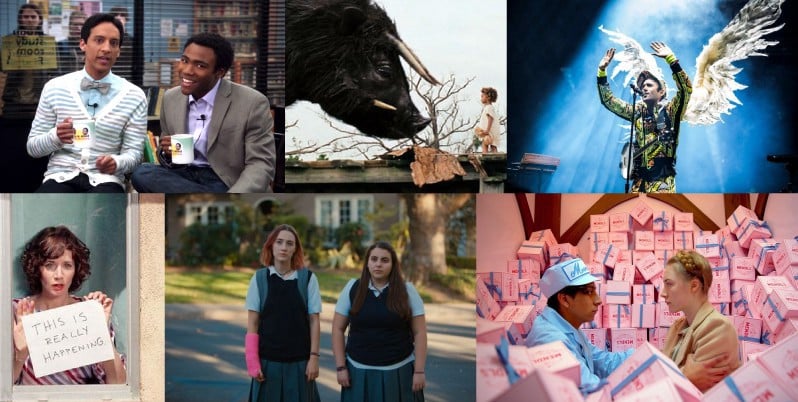This essay by What Is Metamodern? co-editor Greg Dember was originally published on Medium.
I had been waiting for something like this.
For several years I had been observing and contemplating a certain shift in culture – something that was rather hard to pinpoint but yet was unmistakably new. Something seemed to have changed in the new millennium that made it cool again to express unabashed feelings – joy, wonder, sadness, vulnerability, triumph – in our art, and in everyday life, unfettered by the ever-present ironic snark that controlled the nineties and earlier… somehow, in such a way that didn’t toss out the fun that could be had in playing with irony. I’d been hoping that someone — a journalist, an art critic or a scholar — would acknowledge this shift I’d been noticing in music, film, art literature and even the way people around us talked and joked with each other.
In 2010, my writing partner Linda Ceriello and I came upon an essay called “Notes on Metamodernism” in the Journal of Aesthetics & Culture. The authors — Dutch scholars Timotheus Vermeulen and Robin van den Akker — explained how they had begun noticing artworks that did not seem to live within the aesthetics of postmodernism, and, heeding the challenge of other writers who also felt that something new was emerging from postmodernism and that it needed some theory and a better name than “postpostmodernism,” they put forth the name “metamodernism” and summarized their take on it by saying that the new artistic sensibility was one that
… oscillates between a modern enthusiasm and a postmodern irony, between hope and melancholy, between naiveté and knowingness, empathy and apathy, unity and plurality, totality and fragmentation, purity and ambiguity.
Reading this, we felt a sense that we were among kindred minds.
“Notes on Metamodernism” made quite an impression, on others as well as on Linda and me, and spawned a number of websites, articles and conferences dedicated to exploring the topic further. Recently an academic volume has been published: Metamodernism: Historicity, Affect, and Depth after Postmodernism (Radical Cultural Studies)edited by Vermeulen and van den Akker, along with Alison Gibbons. Also, a top selling country music album has “metamodern” in the title and (probably because of that) there is a Metamodern Session IPA beer.
In their 2010 essay, Vermeulen and van den Akker cite several other authors who have elaborated on their own theories of what comes after postmodernism. Among these theories, the “Notes on Metamodernism” authors propose wrapping at least two of them, quirky and performatism, into their model of metamodernism as particular metamodern strategies. Since then, as far as I’m aware, most discussions of metamodernism have been rooted simply in the notion that oscillation between the qualities of modernism and postmodernism is what defines a metamodern sensibility. (Some even seem to conceive of metamodernism as being about oscillation, in general, i.e., involving any pair of opposites.) My purpose here is to suggest an expanded list of metamodern strategies/methods, starting with a slightly different premise. For me, oscillation is not the defining, essential characteristic of metamodernism, but is instead merely one of many potential methods employed in metamodern cultural artifacts. In fact, I propose that the essence of metamodernism is a (conscious or unconscious) motivation to protect the solidity of felt experience against the scientific reductionism of the modernist perspective and the ironic detachment of the postmodern sensibility. In this essay I will outline a list of eleven methods that I see appearing in metamodern work; the list includes oscillation, quirky and performatism, each as merely one method, alongside eight others that I am introducing.
Continue reading on Medium…

